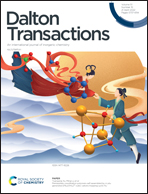Dual-lifetime luminescent probe for time-resolved ratiometric oxygen sensing and imaging
Abstract
Fluorescent/phosphorescent dual-emissive polymers or hybrids consisting of both fluorophore and phosphor have been used as self-calibrating probes and imaging reagents for cellular molecular oxygen. Oxygen selectively quenches the phosphorescence and the fluorescence serves as an internal reference. The phosphorescence/fluorescence ratio is used as a quantitative indicator of oxygen content. In wavelength-ratiometric probes, the fluorophore and phosphor are designed to emit at different wavelengths. It is easy to achieve spectral separation, but the phosphorescence/fluorescence ratio fluctuates due to the difference in the absorption and scattering of light at different wavelengths by biological samples. Herein we reported a lifetime-ratiometric luminescent polymeric probe where the fluorophore and phosphor emitted at the same wavelength. Spectral separation was achieved based on the difference in their excited-state lifetimes via time-resolved luminescence analysis and imaging. The probe exhibited a phosphorescence lifetime of about 931 ns with a phosphorescence/fluorescence ratio of 4.49 in deaerated aqueous buffer. The lifetime was shortened to 251 ns and the ratio decreased to 1.08 in oxygen saturated solution because of phosphorescence quenching. The utilization of the probe for quantitative oxygen sensing and mapping in living HeLa cells was demonstrated using calibration curves obtained from fixed cells.



 Please wait while we load your content...
Please wait while we load your content...